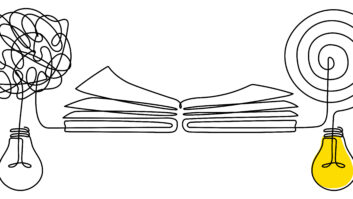For the first time in my eight-year term as editor of this magazine, I have finally gotten my hands dirty like a true custom installation guy.
Since moving into my first house nearly a year ago, Ive had multiple opportunities to learn, through trial and error, how you do that voodoo that you do so well. First I built shelves for my Niles StageFront LCRs. Then I ran my Tributaries speaker wire and subwoofer cable, front to back, to my juice-pumping Sunfire TGR surround receiver.
Fortunately, a drop-tile ceiling simplified most of the wire pulling, but there were still the wall-mounted surrounds to hang and wires to hide.
Too impatient to order fish tape or other tools of the trade, I fashioned a wire-pulling solution out of a clothes hanger. The old trick of using a sinker on the wire wouldnt work in my application, because the drywall and insulation are a snug fit.
The clothes hanger worked great when fishing wire a short distance from the ceiling to the speaker location. Hiding the wires for my LED-lit iSky acoustic panels would prove to be a bigger challenge, however. Still too stubborn to invest in real tools, I turned to an oversize measuring tape this time. After drilling inch-and-a-half holes in the wall where the four acoustical panels would go, I pushed the tape behind and up the wallboard until it reappeared above the drop-ceiling grid. There, I tied the low-voltage power cord to the hole in the tip of the measuring tape and began pulling it down the wall. I knew when the tip of tape was about to reach the hole in the wall when I saw the numbers on it reach two and then one. Thats when I had to get extra careful, making sure I didn’t lose the wire as I pulled it through the hole. Is this a patent-worthy technique or did some of you already try this approach back in your trunk-slammer days?
iSkys acoustic wall panels, as well as the manufacturers better-known starry night ceiling panels, have been some of the cooler additions to my theater in recent weeks. Jeff Graham, iSkys president, drove down to my house from the Chicago area for the initial installation. After painting the white ceiling grid with flat black paint, I was given a pair of rubber surgical gloves to protect my hands from the fiberglass, as well as some simple instructions for connecting the low-voltage panels together.
The process couldnt have been easier. After only a couple of hours of labor, the end result was what looks like a skylight in my basement ceiling. My wife and I enjoyed the visual effect so much that we wanted an even more complete solution. Fortunately, Graham, through his generous StJohn Group distributor, later sent me enough tiles to expand the star field and to fill in the rest of the white ceiling. The project is still a work-in-progress, but it promises to create a fully immersive room and a viewing environment that comes closer to the Tony Grimani-approved screening room standard described in his column last month.
Combining this custom exercise with my earlier Screen Research masking screen installation, Runco projector install, and my control system programming experiments with RTI, UEI, and Niles Audio, Ive begun to learn why this business can become such a passion, and, yes, sometimes a headache.
Ill be writing more about this experience on my blog and in the pages of the magazine as my theater continues to take shape. Be sure to visit the BLOGS section of resmagonline.com to view progress photos and to read more about my attempts to be like you.







